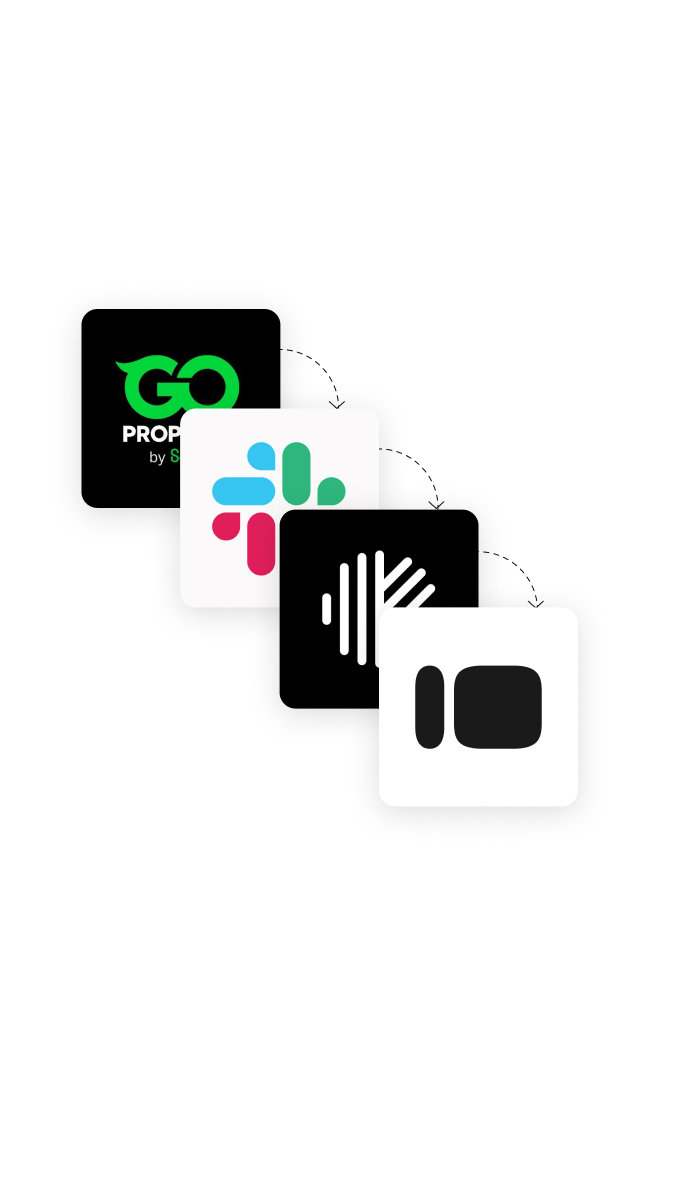
Ashton McGill
Future-proofing an ambitious, scaling, accountancy through AI integration
OUR ROLE
AI Strategy
WOrkflow design
automation implementation
onboarding flow optimisation
confirmation statement workflow
ai client briefing notes

Future-proofing an ambitious, scaling, accountancy through AI integration
AI Strategy
WOrkflow design
automation implementation
onboarding flow optimisation
confirmation statement workflow
ai client briefing notes


Ashton McGill are a growing accountancy. They knew the next stage of growth was within reach, but would require a series of new hires to enable them to handle higher levels of client intake.
They knew there must be a better way to scale, with lower risk, that didn’t turn their interactions with clients robotic. It was vital for them to retain human touch-points and interactions at key points to maintain their reputation as the personable side of the numbers game.
We started by viewing the business holistically, identifying pain points, as well as potential new ways to approach parts of their work. We were also keen to leave space for innovation and find ways to tackle their "never-ever" projects.
We weren’t just looking to make them more efficient - we wanted to make them a happier workspace by freeing up employees to do the more interesting side of the job - helping people with their finances.
With a holistic and strategic overview we started digging into the pain points they had across functions, where we could make the biggest wins and how the team and their personalities knitted together to make Ashton McGill unique.
We came away with the goal of making a demonstrable difference within a month, and with a list of workflows we were going to re-design and the tools we thought we wanted to use.
Using our product background we didn't just start connecting tools together. This exercise wasn't just a technical piece. We used our UX design experience to make sure the workflows were setting the internal team and their clients up for the best chance of success - embedding communication at the core of all we designed.
We then rapidly prototyped different combinations of tools and LLMs, looking for the best outcomes, launching us into implementation with most of our questions answered.
The technical re-building the workflows was the "easy" bit. The trickier part was in the detail - elevating the workflows to match the designed experience we wanted, and that Ashton McGill would benefit from. As we built, we constantly assessed, finding additional pieces of surprise and delight we could add to the flows to create better outcomes for the team.
Data is key - without real data, and some sort of scale - you're guessing. We built the flows in small parts, so we could gradually phase them in, working with the Ashton McGill team to roll them out to the right clients at the right time. As we got feedback, as clients didn't behave in the way we wanted, as the data looked different to what we expected, we iterated to get the experiences right across all the flows.
We set the Ashton McGill team up to run the flows and make small changes where needed, but we continued to work with them as strategic advisors, helping them identify new areas for optimisation and to stay ahead of the curve as new tools and advancements are made in the market.
Ashton McGill had a clear ask - they wanted to double their onboarding capacity, ideally without hiring. They knew their current admin team was overwhelmed - moving documents, chasing clients, checking on statuses, and struggling to find the info they needed at the right time.
We built them a workflow that not only served them the info they needed on a silver platter at the right times of the week, but meant they were triggered to get involved only when needed. No more loading a kanban board or checking emails on the off chance the client sent them "that document" they needed.
Client responses were also hugely improved. It now took one email or one form, rather than two or three because we set them up to succeed with any specific asks made of them.
A lot of the optimisation theory we applied in the onboarding flow also carried across to confirmation statements - serving clients better by getting the right information out of them the first time of asking.
On the team side, while this wasn't anywhere near as big a drain on resources, it was boring, repetitive work that didn't need someone's attention every week. We built a workflow with the admin team personnel specifically in mind, so they only had to get involved for an hour a week in one block, rather than multiple times a day responding to clients, finding information and filing.
Ashton McGill's human first approach to accountancy benefits their clients hugely, but means they set themselves up for a hard slog to make sure they were prepped for client meetings and reporting. They had huge amounts of data in the form of call transcripts sitting dormant.
We built them a client intlligence workflow that enabled them to be pro-actively briefed prior to any client call, catch up on relevant data points and ask for updates direct in a chat interface whilst being asked questions in the calls themselves. The 1-hour hand over when someone takes a day-off was no longer a problem.
